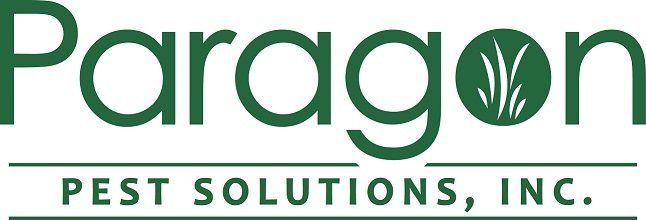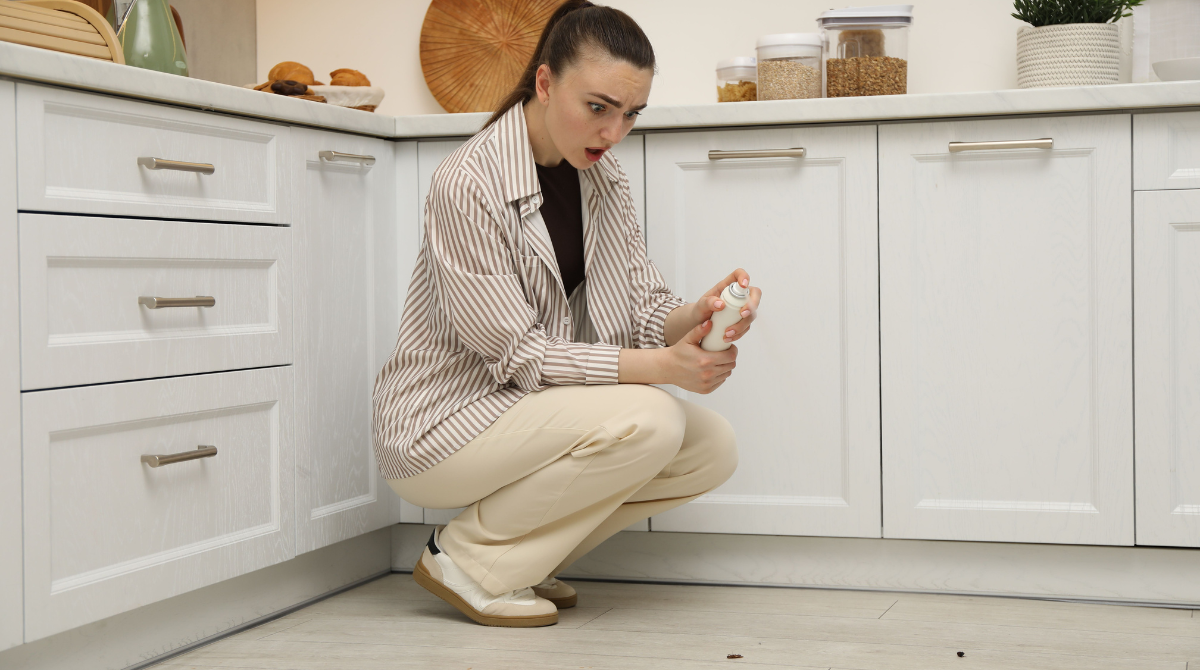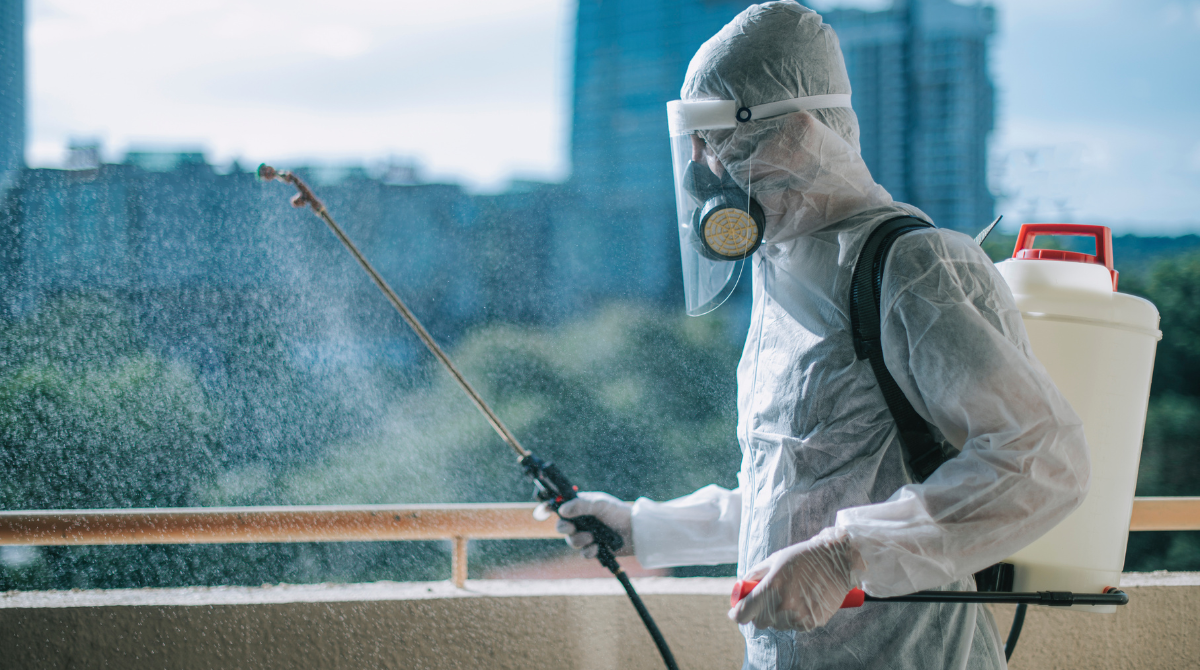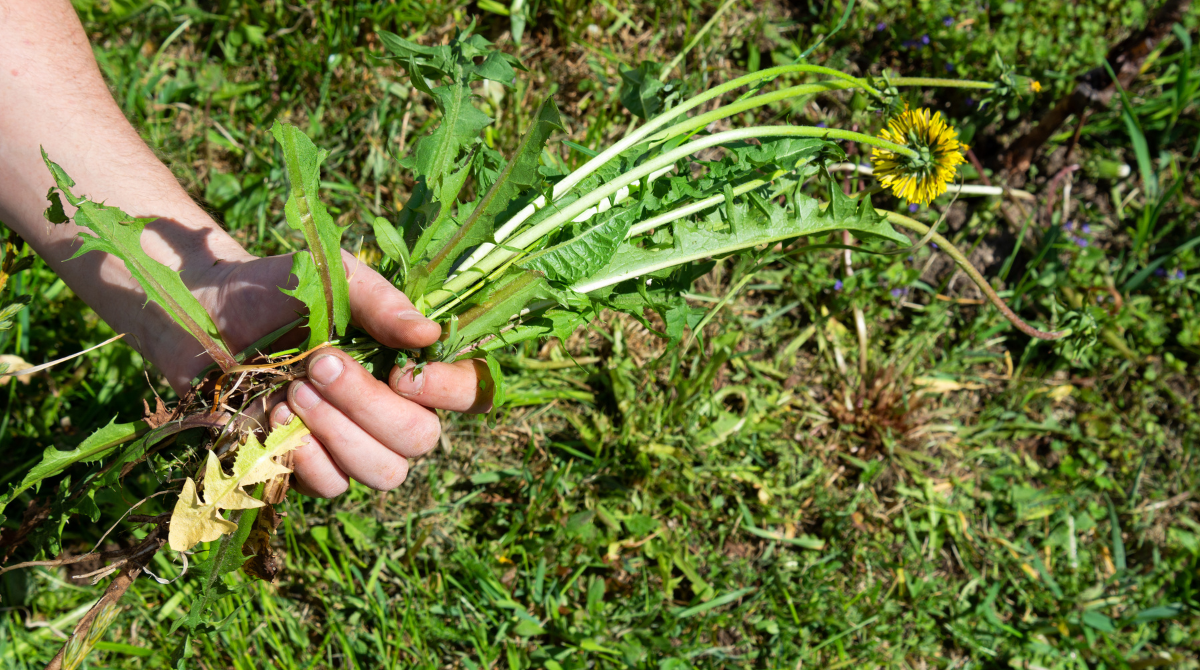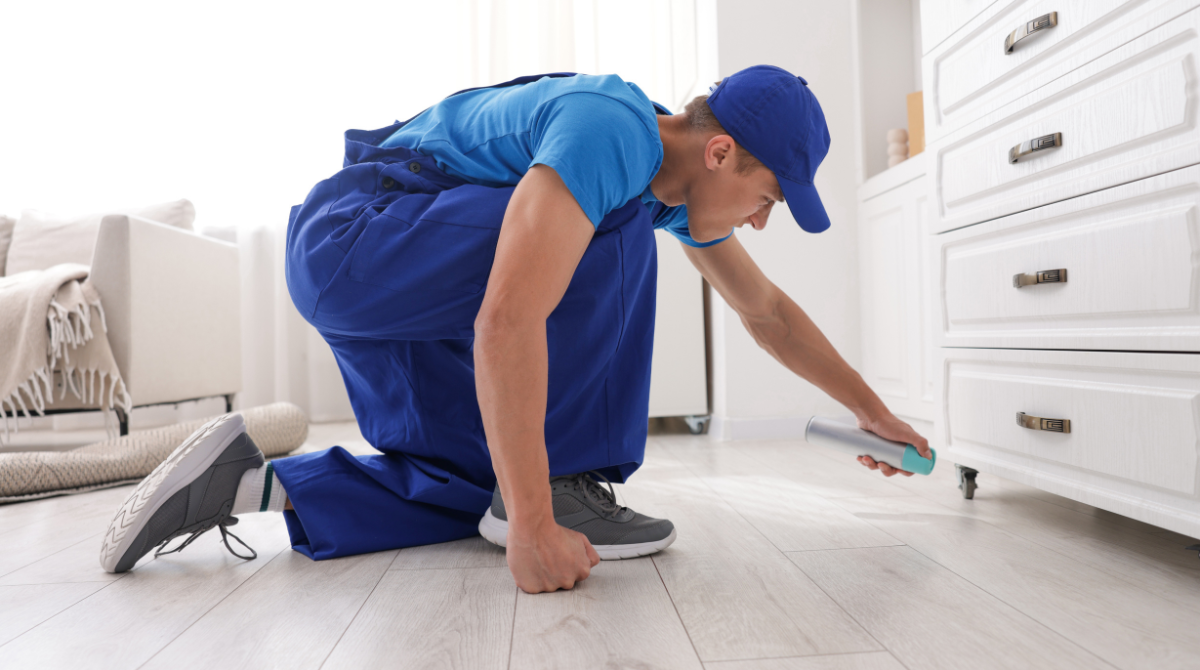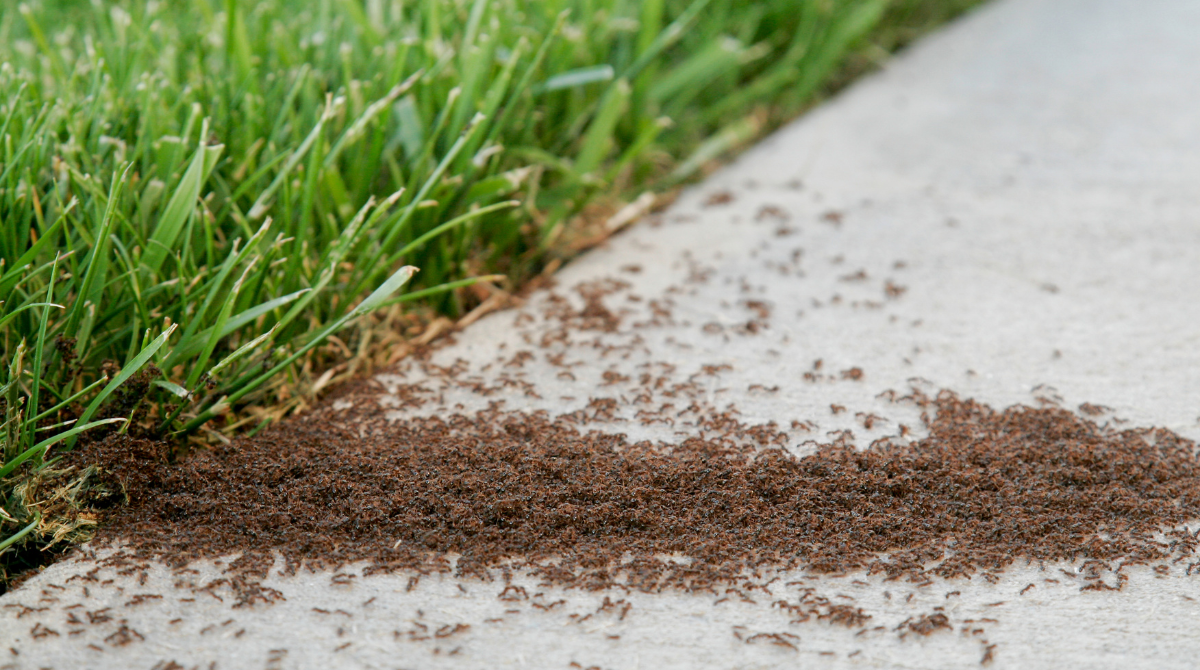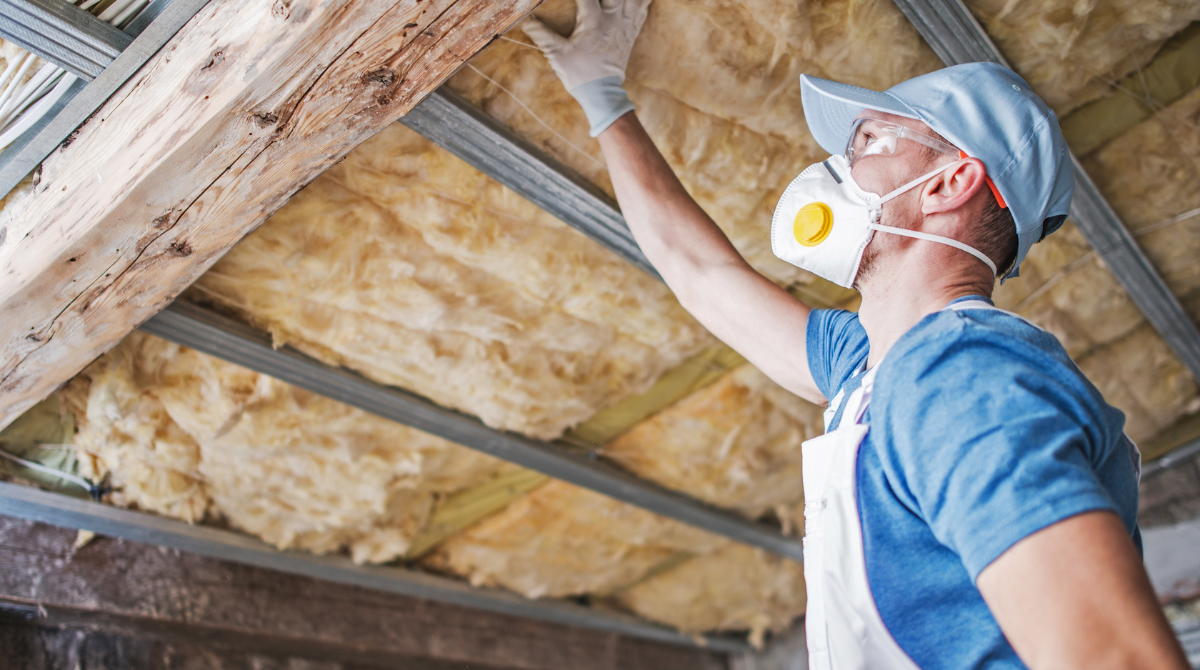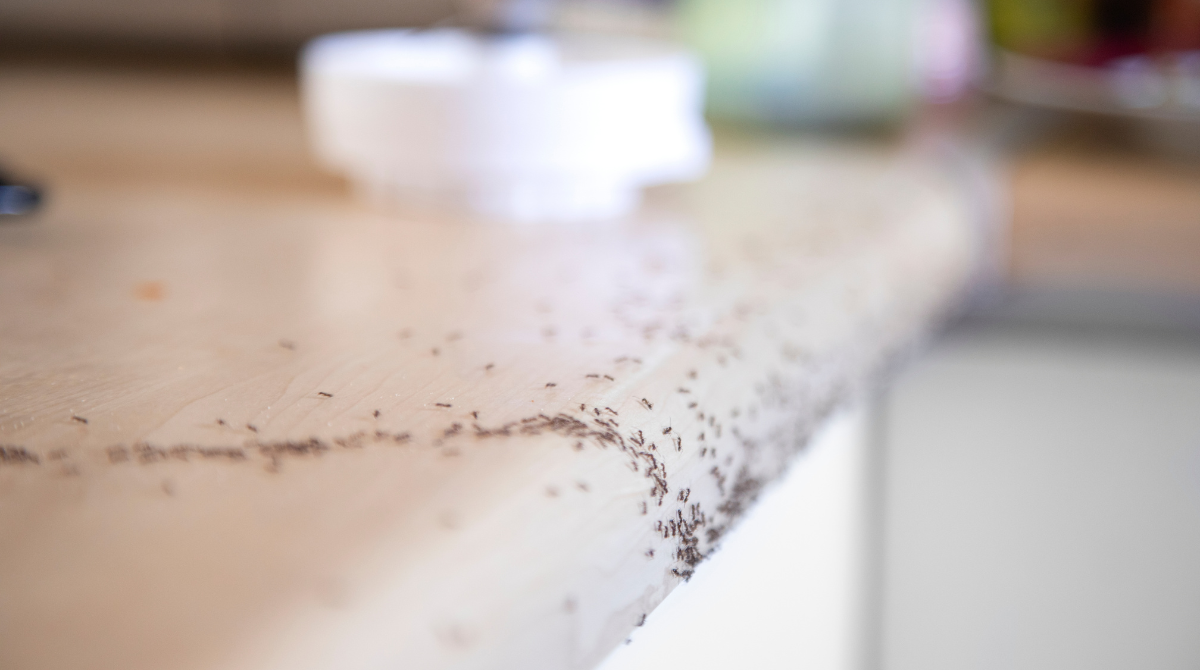Why Fall Is the Best Time for a Termite Inspection in Florida
So, you live in Florida and you're wondering about termites. Yeah, they're a big deal here. Most people think about them in the spring when they see those swarms, but honestly, they're a year-round problem. Fall might not seem like prime termite time because the swarming isn't as obvious, but that's actually why it's a smart time to get a termite inspection Florida. You might not see them, but they're still busy munching away, and by the time you do see signs, the damage could be pretty bad. Plus, termites cause more damage in Florida than fires and floods combined, so it's really something you don't want to mess around with.
Key Takeaways
- Fall is a great time for a termite inspection Florida because termites are still active, even if they aren't swarming, making it easier to catch hidden infestations before they cause major damage.
- Termites cause more damage in Florida than fires and floods combined, and homeowners insurance typically doesn't cover termite damage because it's considered preventable.
- Environmental factors like humidity and rainfall can affect the effectiveness of termite treatments, making timing important for tenting and other services.
- Scheduling a termite inspection in the fall can offer more convenience for homeowners and avoid weather-related delays common during hurricane season.
- Regular, annual termite inspections are crucial for early detection, preventing costly repairs, and identifying areas of your home that may be at risk for future termite problems.
Why Fall Is Ideal For A Termite Inspection Florida
While many people associate termites with the sweltering heat of summer, fall actually presents a prime opportunity to get ahead of these destructive pests in Florida. It’s true that termite swarming, a common sign of an infestation, tends to be more noticeable in warmer months. However, this doesn't mean they disappear when the temperatures drop. In fact, the quieter activity during fall can make it harder for homeowners to detect a problem, allowing termites to continue their silent work unnoticed.
Hidden Threats During Cooler Months
Termites don't just pack up and leave when it gets a little cooler. They continue to feed and damage the wooden structures of your home, often hidden away from plain sight. Because the dramatic swarming events are less common in the fall, homeowners might mistakenly believe their property is safe. This is precisely why a professional inspection during this period is so important. It helps uncover any hidden colonies that might be steadily weakening your home's integrity without obvious outward signs. Catching these hidden threats before they escalate is key to preventing major structural damage.
Proactive Protection For Your Florida Home
Fall is a fantastic time to be proactive about protecting your Florida home. Think of it as a final check-up before the next wave of intense weather or potential termite activity. By scheduling an inspection in the fall, you're taking a crucial step to identify and address any issues before they become major, costly problems. It’s about peace of mind, knowing your home is secure. Many homeowners find that getting this service done in the fall aligns well with other seasonal home maintenance tasks. You can get a professional termite inspection and learn about expert termite services in Florida to keep your home safe year-round.
Understanding Termite Behavior In Fall
Termite behavior shifts as the seasons change. While they might not be swarming as much, their need to feed doesn't stop. Subterranean termites, for instance, continue to build their mud tubes and forage for food sources underground. Drywood termites, which are common in Florida, may retreat into more protected areas within the structure. This change in behavior means that traditional signs like visible swarms are less apparent, making a thorough inspection by a trained professional even more critical. They know where to look, even when termites are trying their best to stay hidden.
Detecting Termites Before They Cause Damage
Even when the weather cools down, termites are still a major concern for Florida homeowners. While they might not be swarming as much as in the spring or summer, that doesn't mean they've packed up and left. In fact, the lack of visible activity can make it even easier for them to go unnoticed, quietly munching away inside your walls and attics. Termites are sneaky like that. They cause more damage in Florida than fires, floods, and storms combined, which is a pretty wild thought. Homeowners insurance usually doesn't cover termite damage because it's seen as something you could have prevented with regular treatments. So, spotting them early is key.
Signs Of Termite Infestations To Watch For
It's not always obvious when termites have moved in. You won't always see them, but there are clues. Keep an eye out for these common signs:
- Discarded Wings: After a termite swarm, they shed their wings. You might find piles of these tiny, translucent wings, often near windowsills or light sources.
- Mud Tubes: Subterranean termites build these pencil-sized tunnels made of mud, soil, and saliva. They use them to travel between their underground colonies and your home's wood, protecting themselves from the air.
- Frass (Termite Droppings): Drywood termites, a common problem in Florida, leave behind small, pellet-like droppings that look a bit like sawdust. You might find these near their entry points or where they're feeding.
- Hollow-Sounding Wood: If you tap on wood that has termites, it might sound hollow because they've eaten away the inside.
- Bubbling or Peeling Paint: Termites can damage drywall and paint, making it look like water damage with bubbles or peeling.
The Importance Of Early Detection
Catching termites early is a big deal. The longer they're in your home, the more damage they can do, and that damage can get really expensive to fix. Think about it – a small termite problem can turn into a structural nightmare if left unchecked. Regular inspections, especially during times when termites might be less visible, are your best bet for staying ahead of them. It’s like getting a check-up for your house; you want to find any potential issues before they become major health problems for your home. Scheduling a free inspection is a smart move for any Florida homeowner.
Termite Damage Exceeds Other Disasters In Florida
This might sound surprising, but termites can actually cause more financial damage to homes in Florida than things like hurricanes or fires. While those events are dramatic and obvious, termites work silently and persistently. Their damage is cumulative, meaning it builds up over time, often going unnoticed until it's severe. Because they consume wood, they can compromise the structural integrity of your home, leading to costly repairs that aren't covered by standard insurance policies. This makes proactive termite control and regular inspections incredibly important for protecting your investment in the Sunshine State.
The Role Of Environmental Factors In Termite Activity
Humidity's Impact On Termite Behavior
Termites, especially the subterranean kind that are common here in Florida, really love moisture. Think of it like this: if your house has damp spots, it's basically rolling out the welcome mat for them. Leaky pipes under the sink, gutters that are always clogged up, or even just water pooling around your foundation after a rain – these are all big draws. Keeping your home dry is one of the best ways to make it less appealing to termites. It’s not just about comfort; it’s about protecting the structure itself. Addressing any moisture issues promptly can make a big difference in preventing an infestation. It’s a good idea to check for these problems regularly, especially after heavy rains. You can find more tips on managing moisture around your property at Florida pest control.
How Rainfall Affects Termite Treatment Efficacy
Rain can actually mess with how well termite treatments work. If you've just had treatment done, heavy rain shortly after might wash away some of the chemicals applied to the soil around your home. This could leave a gap in your protection. On the flip side, if it hasn't rained in a while and the ground is really dry, some treatments might not spread as effectively. The ideal scenario is usually when the soil is slightly damp, allowing the treatment to distribute evenly. This is why timing your treatments, and any inspections, around expected rainfall patterns can be pretty important for getting the best results.
Optimal Temperatures For Termite Control
Termites are cold-blooded, so the temperature really dictates how active they are. When it gets really cold, like below freezing, they tend to slow down a lot, almost going dormant. This is why fall and winter can sometimes make it a bit easier to manage them – their activity is more predictable. However, they don't just disappear. They're still around, just less mobile. Warmer temperatures, especially the kind we get in Florida for most of the year, mean they're active and busy. This constant activity, even when you can't see them, is why year-round vigilance is key. While fall might seem like a quieter time, it's actually a great window to get ahead of them before the real heat of next year's termite season kicks in.
Scheduling Your Termite Inspection Florida
Scheduling your termite inspection in Florida during the fall offers a sweet spot for homeowners. It's a time when the intense summer heat and humidity start to mellow, making it more comfortable for both you and the pest control professionals. Plus, it's a smart move to get ahead of any potential issues before the cooler, wetter winter months arrive, which can sometimes drive termites indoors seeking warmth and moisture.
Convenience For Homeowners
Fall often means fewer family vacations and school breaks compared to summer. This can make it easier to find a day that works for your household without major disruptions. You won't have to worry as much about coordinating around holiday travel or summer camp schedules. It's just a more predictable time of year for most families.
Avoiding Weather-Related Delays
While Florida's weather is famously unpredictable, the peak of hurricane season, which can cause significant delays for outdoor treatments like tenting, usually starts to wane by late October. Scheduling your inspection and any necessary treatments in early to mid-fall can help you avoid the worst of the storm season. This means a lower chance of your appointment being postponed due to high winds or heavy rains, leading to a smoother process.
Maximizing Treatment Effectiveness
For treatments that involve fumigation, temperature plays a big role. Fumigant gases work best when the ambient temperature is consistently above 65°F. Fall in Florida generally provides these optimal conditions more reliably than the cooler winter months. Scheduling during this period helps ensure the treatment can penetrate effectively and eliminate termite colonies, giving you better results and more peace of mind.
Understanding Termite Treatment Methods
The Process Of Structural Fumigation
Structural fumigation, often called tenting, is a method used to get rid of termites that have spread throughout your entire home. It involves covering your house with a large tent and then introducing a gas that penetrates all the nooks and crannies. This gas is designed to kill termites at every stage of their life cycle – eggs, larvae, and adults. The whole process usually takes a few days. First, technicians will inspect your home to figure out how bad the infestation is and where the termites are hiding. They'll give you a list of things to do to prepare, like moving food, plants, and pets out. On treatment day, they'll carefully wrap your house in a special tent. Once it's sealed, the fumigant is released. After the required time, the tent comes off, and the house is aired out to make sure it's safe to come back inside. Specialized equipment is used to check that all the gas is gone before you can return.
When Tenting Is Necessary
Tenting is generally reserved for more widespread termite problems, particularly those involving drywood termites that can establish colonies within the wooden structure of your home without needing contact with soil. If you have a significant drywood termite infestation, or if subterranean termites have managed to tunnel into the upper levels of your house, tenting might be the most effective solution. It's a thorough approach that reaches every part of the structure. However, it's not always the first or only option. Sometimes, localized treatments can handle smaller infestations. The decision to tent usually comes after a professional inspection determines the extent and type of termite activity present.
Factors Influencing Treatment Success
Several things can affect how well a termite treatment works. For tenting, the weather on the day of treatment is important; extreme heat or wind can make the process more difficult. The preparation of your home is also key – if food, plants, or certain items aren't properly sealed or removed, they could be damaged by the fumigant. For other treatments, like baiting systems, success depends on the termites actually finding and consuming the bait. The health and size of the termite colony also play a role. Consistent follow-up inspections are vital to confirm that the treatment has eliminated the termites and to prevent future issues.
Here's a quick look at common treatment methods:
- Fumigation (Tenting): Best for widespread drywood termite infestations. It's a whole-house treatment.
- Baiting Systems: These are placed around your property. Termites eat the bait, which is then passed through the colony, ideally eliminating it.
- Liquid Treatments: Applied to the soil around your home's foundation or directly to infested wood. This creates a barrier that termites can't cross.
Choosing the right treatment method depends on the type of termite, the size of the infestation, and the structure of your home. It's always best to consult with a pest control professional to determine the most effective approach for your specific situation.
Preventative Measures For Florida Homes
Termites are a constant worry for Florida homeowners, and while fall might seem like a quiet time for these pests, it's actually a great period to get proactive. Taking steps now can save you a lot of headaches and money down the road. It’s all about making your home less inviting to them.
Eliminating Moisture Sources
Termites absolutely love damp environments. Think of it as their all-you-can-eat buffet. So, the first line of defense is to cut off their water supply. This means fixing any leaky pipes under your sinks or in the bathroom. Seriously, even a slow drip can create enough moisture for termites to thrive. Also, pay attention to where water collects outside your house. Make sure your gutters are clear and that downspouts are directing water away from your foundation. You don't want any standing water near your home's wooden structure. It’s a simple fix that makes a big difference.
Proper Landscaping Practices
Your yard can be a termite's highway right to your front door, or rather, your walls. Keep mulch and soil from piling up against your home's exterior. Ideally, you want a gap between your landscaping and the house itself. Wood debris, like old stumps or fallen branches, should be cleared away. If you have trees or shrubs, keep them trimmed back from the walls. Overgrown plants can provide cover and a direct bridge for termites to reach your home's structure. Also, avoid direct wood-to-soil contact anywhere on your property, including fences or sheds.
Maintaining Your Roof and Attic
Your roof and attic are often overlooked, but they're prime real estate for termites. If you have any damaged or missing shingles or tiles, get them fixed right away. These small issues can expose the wooden beams in your attic, giving termites easy access to food and shelter. It’s like leaving a welcome mat out for them. Replacing cardboard boxes with plastic storage containers in your attic or garage is another good move. Cardboard is made of wood pulp, after all, and can attract termites.
The Necessity Of Annual Inspections
Termites are sneaky pests, and the damage they cause can really add up. That's why making sure you get a termite inspection every year is a really smart move for any homeowner. It’s not just about finding termites that are already there; it’s also about spotting those little signs that could lead to a bigger problem down the road. Think of it like a yearly check-up for your house – you want to catch anything before it turns into a major issue.
Catching Activity Early
Termites can be active for a long time without you even knowing it. They like to stay hidden, munching away at your home's wooden structures. An annual inspection is your best bet for finding them early. Inspectors know what to look for, like tiny mud tubes or frass (termite droppings), which are easy to miss if you're not trained. Catching an infestation early means less damage and, usually, a simpler and less expensive treatment process. It’s all about staying ahead of the game.
Preventing Costly Repairs
Let's be honest, nobody wants to deal with expensive home repairs. Termite damage can be extensive, weakening the structural integrity of your home. We're talking about things like damaged support beams, chewed-up flooring, and compromised walls. The cost to fix all of that can be staggering, often running into thousands of dollars. A yearly inspection helps prevent these major expenses by catching infestations when they're small and manageable. It’s a proactive step that saves you money and a lot of headaches in the long run. Protecting your investment is key, and regular inspections are a big part of that. You can find more information on the benefits of these checks at annual termite inspections.
Identifying Future Risk Areas
Beyond just finding current termite activity, a good inspector will also point out conditions around your home that might attract termites in the future. This could be things like leaky pipes creating moisture issues, wood-to-ground contact, or even certain types of mulch too close to your foundation. Knowing these potential risk areas allows you to take preventative steps, like fixing leaks or adjusting landscaping. It’s about creating a less inviting environment for termites before they even think about moving in.
Preparing For Your Termite Inspection
Getting ready for your termite inspection is pretty straightforward, but doing a little prep work beforehand really helps the technician do their job thoroughly. Think of it like getting your car ready for an oil change – you don't have to do much, but it makes things smoother.
Clearing Under Sinks And Around Walls
First off, let's talk about those often-forgotten spots: under your kitchen and bathroom sinks. These areas are prime real estate for termites, especially if there's any moisture from leaky pipes. You'll want to pull out everything stored there – cleaning supplies, extra toiletries, whatever you've got stashed away. This gives the inspector clear access to check the pipes, the baseboards, and the walls for any signs of trouble, like mud tubes or damaged wood. It’s the same idea for areas around your home’s exterior walls. If you have furniture, storage boxes, or anything else pushed up against them, try to pull it back a couple of feet. This allows the inspector to get a good look at the foundation and the lower parts of your walls, which are common entry points.
Ensuring Access To Key Areas
Termites love to hide in dark, undisturbed places. That means your attic and any crawl spaces are high on their list of favorite hangouts. Make sure there’s nothing blocking the entrances to these areas. If you have stored items in your attic or crawl space, try to consolidate them or move them so the inspector can easily get in and examine the entire space. This includes checking the rafters, insulation, and any wooden structures within these hidden zones. A clear path means a more complete inspection.
Managing Exterior Obstructions
Outside your home, you’ll want to do a little tidying up too. Trim back any bushes, shrubs, or tree branches that are touching or hanging over your house. Overgrown vegetation can hide termite activity and also provide a convenient bridge for termites to reach your home’s structure without touching the ground. Also, check for any wood-to-ground contact, like firewood stacks or wooden landscape timbers, near your foundation. Removing these potential food sources and hiding spots makes the inspector's job easier and helps identify potential risks. A little preparation goes a long way in ensuring your termite inspection is as effective as possible. If you're looking for a good time to get this done, consider the fall; it's a great period for termite tenting in Florida before the cooler weather really sets in.
Here’s a quick rundown of what to clear:
- Under sinks (kitchen and bathrooms)
- Around interior walls where items are stored
- Attic and crawl space access points
- Exterior walls (pull items back at least 2 feet)
- Vegetation touching the house
- Wood-to-ground contact near the foundation
Think of this prep work as helping the inspector see the whole picture. They're looking for subtle signs, and anything that hides those signs, even unintentionally, can make their job harder. Being proactive with your preparation means you're more likely to catch any potential issues early on.
Termite Species Common In Florida
Florida is a prime spot for termites, and knowing which types you're dealing with is half the battle. We've got a few main players that love our state's climate.
Subterranean Termite Colonies
These guys are the most common and can be a real headache. They live in underground colonies, sometimes with millions of members. They build mud tubes to travel from the soil to your home's wooden structures, which is how they get their food – anything with cellulose. Because they're hidden underground, you might not see them until the damage is pretty bad. Their sheer numbers mean they can cause destruction surprisingly fast.
Drywood Termite Swarming Patterns
Unlike their subterranean cousins, drywood termites don't need to stay near the ground or moisture. They live directly in the wood they infest, like your home's framing or furniture. You're most likely to notice them when they swarm, usually in the spring and sometimes in the fall. These swarms are reproductive cycles where winged termites fly off to start new colonies. Seeing a swarm of these winged insects, often mistaken for ants, is a big red flag.
The Destructive Nature of Formosan Termites
Formosan termites are a particularly aggressive type of subterranean termite that's become a big problem in Florida. They form massive colonies, sometimes numbering in the millions. These termites are voracious eaters and can chew through wood at an alarming rate. They also build those mud tubes, but they can be more elaborate and widespread than other subterranean species. Because they're so numerous and eat so quickly, Formosan termites can cause significant structural damage to a home in a relatively short period.
It's important to remember that even though swarming might be less noticeable in the fall, these termites are still active and working away inside your walls. Early detection is key to preventing major damage.
Why Homeowners Insurance Doesn't Cover Termites
It's a common misconception that your homeowner's insurance will bail you out if termites decide to move into your house. Unfortunately, that's usually not the case. Most policies consider termite damage to be preventable. Since you're expected to maintain your property and take steps to avoid issues like infestations, the cost of dealing with termites typically falls squarely on your shoulders.
Think about it: if your insurance covered every little thing that could go wrong, premiums would be sky-high. Termites are a known risk, especially here in Florida, and regular inspections are the way homeowners are expected to stay ahead of them. It’s kind of like how flood insurance is separate because flooding is a specific, predictable risk in certain areas. Termites are similar; their presence and the damage they cause are seen as something you can and should actively prevent.
Here's a quick rundown of why insurance usually doesn't cover it:
- Avoidable Damage: Insurers view termite damage as a result of neglect or lack of preventative maintenance.
- Known Risk: Termites are a persistent problem in many regions, particularly Florida, making their presence a foreseeable issue.
- Proactive Measures: Homeowners are expected to take steps like regular inspections and treatments to protect their property.
So, while it's a bummer to think about, it really highlights the importance of being proactive. Getting those annual inspections, especially in the fall when things might seem quiet but the damage can still be happening unseen, is your best bet. It's way cheaper to catch them early than to pay for major repairs out-of-pocket later, not to mention the cost of treatment.
The financial hit from termite damage can be substantial, often exceeding the costs associated with other common home disasters like minor fires or storms. This is because termites work silently and persistently, weakening the structural integrity of your home over time, often going unnoticed until significant damage has already occurred.
Expert Termite Services In Florida
When you're dealing with termites, you really want to bring in the pros. Trying to handle these pests yourself is usually a losing battle, and honestly, it can end up costing you more in the long run. Professional termite services in Florida are designed to tackle these invaders head-on, using methods and products that the average homeowner just can't get their hands on.
Professional Inspection Benefits
Getting a professional inspection is the first step, and it's a big one. These folks know exactly what to look for – the tiny signs that you'd probably miss. They're trained to spot termite activity, even when it's hidden deep inside your walls or in those hard-to-reach spots. Think of it like a doctor giving you a check-up; they can catch problems early before they become serious health issues for your house.
- Early detection: Professionals can identify infestations that are just starting, often before any visible damage appears.
- Thorough assessment: They check the entire property, including the attic, crawl spaces, and exterior, for any signs of termite presence or conducive conditions.
- Identification of species: Knowing the specific type of termite (like subterranean or drywood) helps in choosing the most effective treatment plan.
Effective Treatment Solutions
Once an inspection is done, the real work begins with treatment. Professionals have access to a range of treatments, from localized spot treatments to whole-house fumigation. They'll figure out which method is best for your situation. For instance, if you have drywood termites, they might use a direct wood treatment. If it's a larger subterranean termite problem, they might go for baiting systems or liquid barrier treatments around your home's foundation. It's not a one-size-fits-all deal, and that's why their approach is so much more effective.
Long-Term Protection Strategies
It's not just about getting rid of the termites you have; it's about stopping them from coming back. Expert termite services often include ongoing protection plans. This might involve regular follow-up inspections or maintenance treatments to keep your home safe. They can also give you advice on how to make your home less attractive to termites in the future, like managing moisture or adjusting landscaping. This proactive approach is key to preventing future infestations and protecting your investment.
Termites cause more damage in Florida than fires, floods, and storms combined. That's a pretty wild statistic, and it really drives home why taking action sooner rather than later is so important. Relying on professionals means you're getting the best chance to avoid that kind of costly damage.
Florida residents, are termites causing trouble? We offer top-notch termite solutions across the state. Don't let these pests damage your home. Get rid of them for good by visiting our website today!
Don't Wait, Inspect This Fall
So, even though the swarming might be less obvious in the fall, termites are still out there, quietly doing damage. Since homeowners insurance usually doesn't cover termite damage, it's really on us to protect our homes. Termites can chew through wood surprisingly fast, and they don't take a break. Getting a termite inspection this fall is a smart move. It’s a simple step that can save you a lot of headaches and money down the road. Think of it as a yearly check-up for your house, making sure those tiny invaders haven't moved in. Give your local pest control company a call and schedule that inspection – it’s worth the peace of mind.
Frequently Asked Questions
Why is fall a good time for a termite inspection in Florida?
In Florida, fall is a great time to check for termites because they don't swarm as much, making it harder for homeowners to spot them. This means termites could be quietly damaging your home without you knowing. Getting an inspection in the fall helps catch these hidden threats before they cause bigger problems.
How bad is termite damage in Florida compared to other disasters?
Termites cause more damage in Florida than fires, floods, and storms combined. They can eat through wood quickly, especially types like Formosan termites that live in huge colonies. Since homeowner's insurance usually doesn't cover termite damage because it's seen as preventable, it's smart to get checked.
How does rain or humidity affect termite treatment?
Termites love moisture. While they're active all year, very heavy rain or high humidity during treatment, like when a house is tented, can make the treatment less effective. Dry weather is usually better for fumigation because it helps the gas get into the wood better.
How does fall weather affect scheduling termite tenting?
Tenting a house for termites means you have to leave for a few days. Fall can be a good time because it's often outside of hurricane season, meaning fewer weather delays. Also, scheduling during a less busy time for your family can make the disruption easier.
What is structural fumigation and when is it best done?
Structural fumigation, or tenting, is when a house is covered and filled with gas to kill termites everywhere. This is usually done for big or hard-to-find termite problems. The best time for this is when temperatures are above 65°F, which often happens in Florida's fall.
What are some ways to prevent termites around my home?
To prevent termites, fix leaky pipes to reduce moisture, keep mulch and wood piles away from your house, trim trees and bushes so they don't touch the walls, and repair your roof quickly if it's damaged. Also, try to store things in plastic bins instead of cardboard.
Why is it important to have a termite inspection every year?
An annual inspection is important because termites can go unnoticed for a long time. Catching them early saves money on repairs and treatments. Inspections also help find areas that might attract termites in the future, so you can protect those spots.
How should I prepare my home for a termite inspection?
Before an inspector comes, clear out everything under your sinks and pull furniture away from walls, both inside and outside. Make sure they can easily get to places like the attic or crawl spaces. Trimming plants that hide the outside walls also helps them do a better job.
